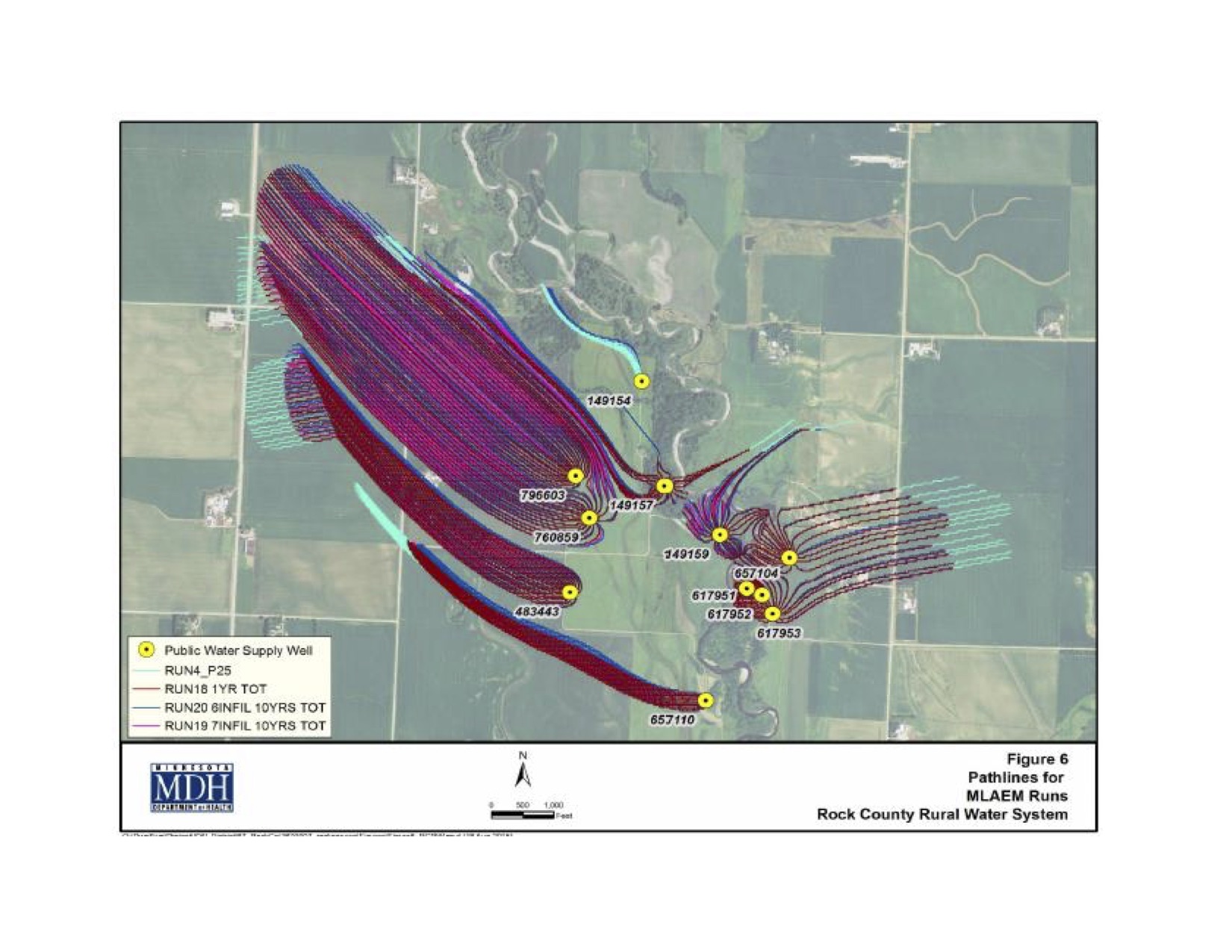
Rock County Rural Water is acquiring land in its wellhead area to improve water quality and reclaim three previously contaminated wells.
A pilot proposal funded by the Minnesota Board of Soil and Water Resources (BWSR) offers $1.3 million to enroll 120 acres of farmland into a permanent easement.
The area would be planted into native grasses to filter nitrates and other contaminants from ground water as it makes its way through the wellhead area.
High nitrate levels from conventional crop production have kept three of the system’s 10 wells from daily use.
The natural grass filtration improves water quality at a fraction of more conventional costs.
After the ground is under easement, Rock County Rural Water will purchase the ground, take it out of crop production and plant grasses.
Commissioners agreed to pursue a purchase agreement for the land and apply for a zero percent loan from the Minnesota Department of Health.
Joint effort to
improve water quality
Rock County Land Management Office and Rock County Rural Water have worked together on water quality improvement.
For the past five years, Doug Bos with LMO has worked with Clinton Township landowners to implement nitrogen best management practices that included lower nitrogen applications around the rural water wellhead areas near the Rock River.
Results of the nitrate-lowering practices have been mixed.
“They have done split application — no fall application — and we still cannot get the nitrate levels down enough to pass federal standards (in the three affected wells),” Bos said.
However, planting permanent native grass around another well proved to be a successful filter for the shallow aquifer, around 30 to 50 feet deep.
“By putting in grass, we stopped that application of nitrogen closest to the well to actually influence it to be cut in half, so now it is usable,” Bos said.
Rock County Rural Water strives to keep nitrates below an average 7 parts per million on a daily basis. The state health requirement is 10 ppm or less. Some rural water wells tested as high as 30 ppm.
The easement program requires Rock County Rural Water officials to provide $118,000 toward the land purchase.
“It’s a lot of money,” Rural Water manager Ryan Holtz said about the investment from his office and local Land Management.
“Neither of us see any other choice to be able to make the water usable five years from now. We have to think ahead because Rural Water is only going to get bigger.”
Nature is less expensive water filtration option
The land purchase is an economical filtration option, Holtz said.
Locating and drilling a new well field costs $20 to $30 million, and building a pump station to blend the high-nitrate water with water from Lewis and Clark water system costs nearly $2.5 million to complete.
Rock County Rural Water could utilize a 10-year, 0-percent interest loan through the Minnesota Pollution Control Agency, Holtz said.
Each minute, more than 1,200 gallons of water flows through the RCRW filtration plant, and 75 percent is from the system’s local well field. The other 25 percent is from two connections to the Lewis and Clark water system.
The three unusable wells produce 600 gallons per minute or half of the Rural Water system’s needs.
Holtz said until the Lewis and Clark line is fully completed in about six years, RCRW can use more than its contracted 300,000 gallons a day.
Need for water continues to grow in the county
RCRW serves nine of the county’s 12 townships and five small cities through 775 customer connections.
Five new connections were recently added to the system with two additional connects already scheduled.
“The system just keeps growing,” Holtz said.
When the three landowners approached Holtz and the rural water board about purchasing 120 acres near the three unusable wells’ main draw zone, a unique opportunity to pilot a natural nitrate filtration system presented itself.
The natural filtration may take several years to have a permanent effect on the well field nitrate levels or about the same time the Lewis and Clark system finishes its final connections.
“We can put all the money in the world in the system, but if we don’t have the water to put through the pipes, it’s not any good,” Holtz said.
The water quality pilot grant program is a result of an official state tour legislators completed in southwest Minnesota including Rock County last year.
LMO and RCRW officials explained the county’s rural water project and landowner incentives for managing nitrogen applications and planting cover crops in the wellhead areas.
LMO will continue working with surrounding landowners to continue best nitrogen management practices within two miles of the well field.
“Farmers have helped but they need to continue to do so because it still influences the nitrate levels,” Bos said.


